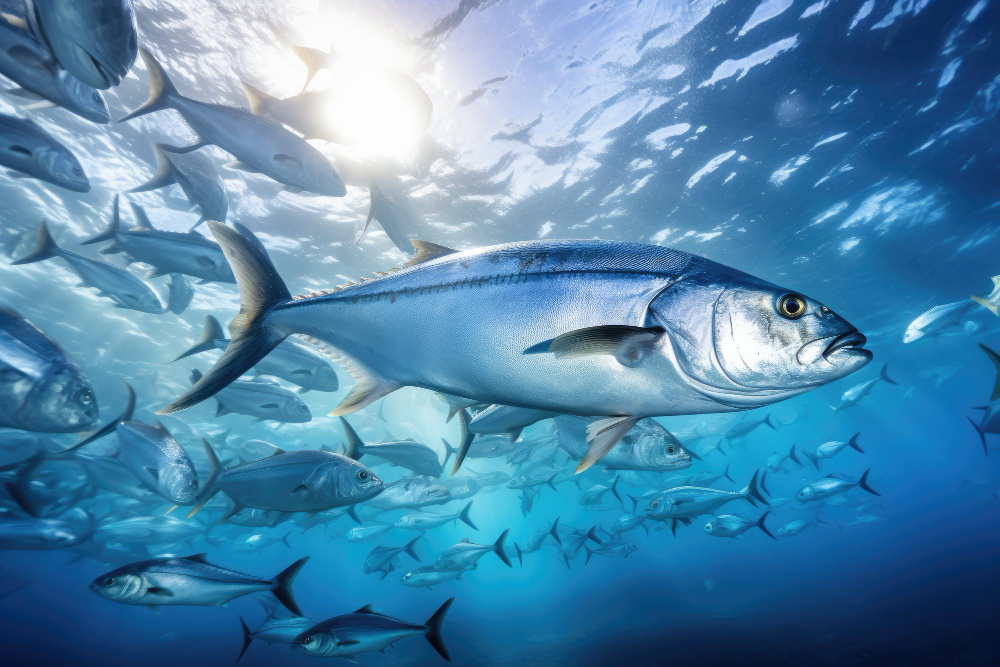
Which Environmental Factor Could Lead to a Decrease in Genetic Variation in a Population of Tuna?
The genetic variation within a population of tuna plays a crucial role in its ability to adapt to changing environmental conditions and survive in diverse habitats. However, certain environmental factors can impact genetic diversity, potentially leading to a decrease in variation within the population. Let’s dive into some of the environmental factors that could influence genetic variation in tuna populations and their implications for the species’ resilience and survival.
Straining Genetic Diversity
Overfishing is a significant environmental factor that can lead to a decrease in genetic variation within tuna populations. Intensive fishing practices, such as longline fishing and purse seining, target large numbers of tuna individuals, often focusing on specific size or age classes. As a result, genetic diversity may decline as certain individuals are disproportionately removed from the population, reducing the gene pool and limiting the population’s ability to adapt to environmental changes.
Fragmenting Genetic Connectivity
Habitat loss and degradation, including the destruction of spawning grounds and coral reefs, can fragment tuna populations and disrupt genetic connectivity between subpopulations. This fragmentation can lead to reduced gene flow and increased genetic isolation, limiting the exchange of genetic material between individuals and populations. As a result, genetic variation may decrease within isolated subpopulations, making them more vulnerable to environmental stressors and population declines.
Shifting Oceanic Conditions
Climate change is altering oceanic conditions, including sea surface temperatures, ocean currents, and habitat availability, which can impact tuna populations and their genetic diversity. Tuna species are highly migratory and rely on specific environmental conditions for breeding, feeding, and spawning. Changes in oceanic conditions can disrupt these critical habitats and migration patterns, leading to shifts in population structure and genetic composition.
Genetic Stressors
Pollution and contamination from sources such as plastic debris, chemical pollutants, and oil spills can pose genetic stressors to tuna populations. Exposure to pollutants can lead to genetic mutations, reproductive abnormalities, and reduced fitness, affecting the genetic health of individuals and populations. Additionally, bioaccumulation of pollutants in tuna tissues can magnify the effects of contamination throughout the food chain, further impacting genetic diversity and population dynamics.
Introducing Genetic Novelty
The introduction of invasive species into tuna habitats can introduce genetic novelty and disrupt native populations. Invasive species may compete with tuna for resources, prey on juveniles, or introduce pathogens and parasites that affect tuna health and genetic diversity. The presence of invasive species can alter predator-prey dynamics and ecosystem interactions, leading to changes in genetic variation within tuna populations over time.
Impacts on Reproduction and Development
Ocean acidification, driven by increased carbon dioxide levels in the atmosphere, can affect the reproductive success and development of tuna species. Acidification can impair the formation of calcium carbonate structures, such as fish eggs and larvae, making them more vulnerable to predation and environmental stressors. Reduced reproductive success can lead to decreases in genetic diversity within tuna populations, as fewer individuals contribute to future generations.
Balancing Conservation and Harvest
Fisheries management practices play a crucial role in mitigating the impacts of environmental factors on tuna genetic variation. Sustainable management measures, such as implementing catch limits, size regulations, and marine protected areas, can help conserve genetic diversity within tuna populations. By balancing conservation efforts with sustainable harvest practices, fisheries managers can support the long-term viability of tuna populations and maintain genetic resilience in the face of environmental challenges.
Navigating Genetic Waters
Understanding the environmental factors that influence genetic variation in tuna populations is essential for the conservation and management of these iconic marine species. By addressing threats such as overfishing, habitat loss, climate change, pollution, invasive species, ocean acidification, and implementing sustainable fisheries management practices, we can help safeguard the genetic diversity of tuna populations and ensure their survival in the face of ongoing environmental changes.